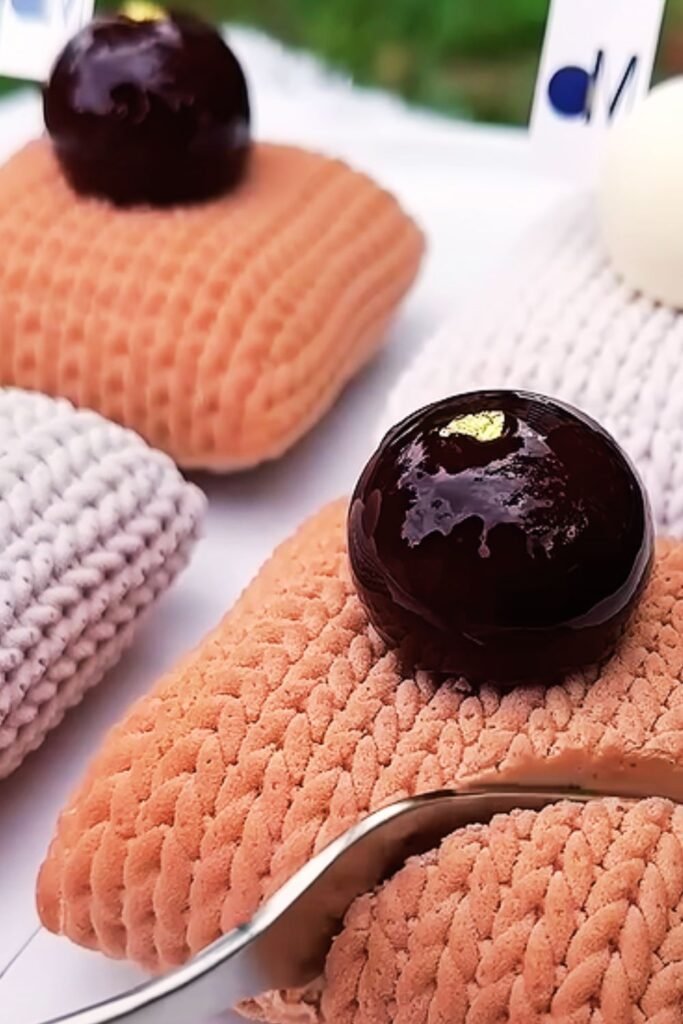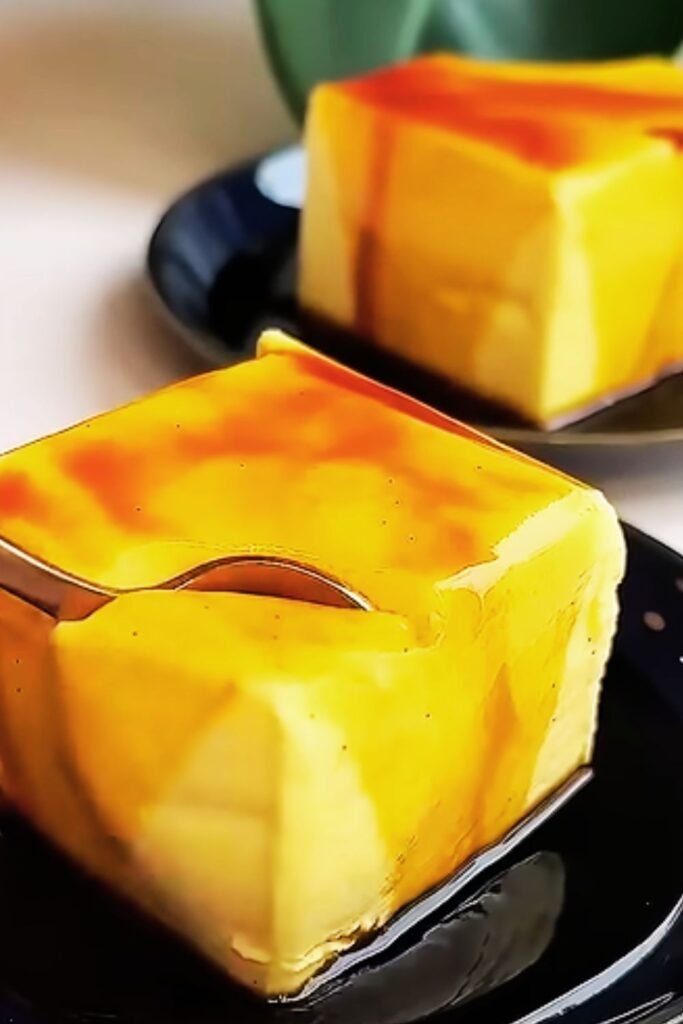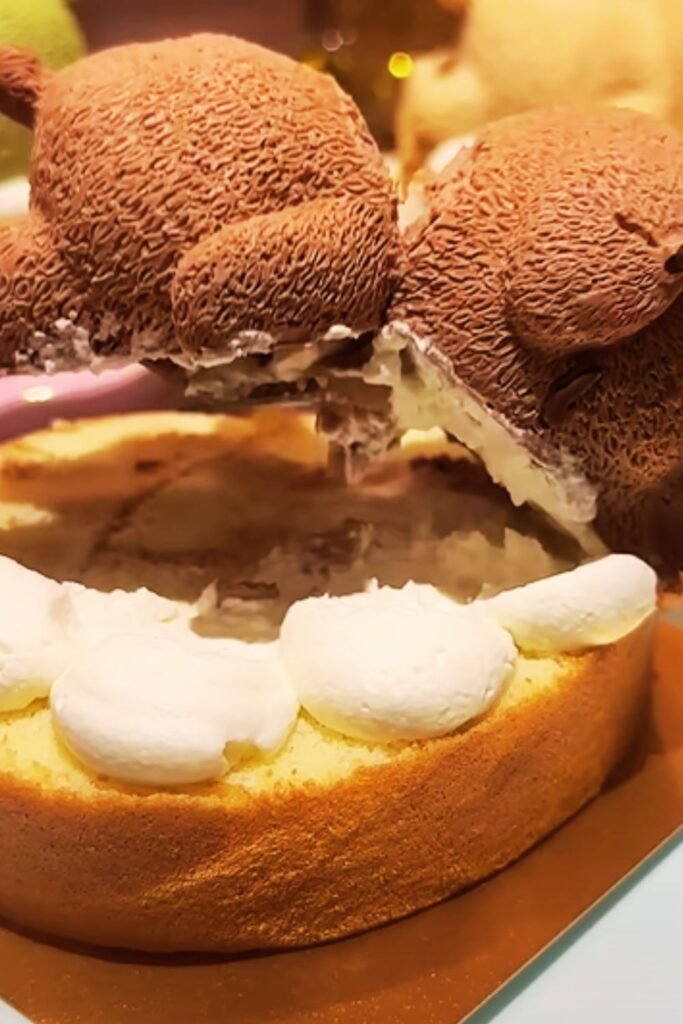Growing up with a fascination for Japanese culture, I’ve always been captivated by the artistry and delicate flavors of Japanese desserts. These sweet creations represent more than just treats – they’re windows into Japan’s rich cultural heritage, seasonal celebrations, and meticulous attention to detail. From traditional wagashi served during tea ceremonies to modern fusion desserts that have taken the world by storm, Japanese sweets offer an incredible diversity of textures, flavors, and visual appeal.
What makes Japanese desserts truly special is their philosophy of wa (harmony) – the balance between sweetness, texture, appearance, and seasonal appropriateness. Unlike Western desserts that often prioritize intense sweetness, Japanese sweets celebrate subtlety, natural ingredients, and the beauty of imperfection known as wabi-sabi.
Understanding Japanese Dessert Categories
Before diving into our list, let me explain the main categories of Japanese desserts:
Wagashi: Traditional confections made primarily from plant-based ingredients like sweet bean paste, rice flour, and sugar. These are often served with tea and reflect seasonal themes.
Yogashi: Western-influenced desserts that have been adapted to Japanese tastes, often featuring lighter sweetness and unique local ingredients.
Dagashi: Casual, inexpensive sweets that are popular among children and nostalgic adults.
Frozen Desserts: Modern creations that showcase Japanese innovation in texture and flavor combinations.
The 21 Most Popular Japanese Desserts
1. Mochi (餅)
Mochi stands as perhaps the most iconic Japanese dessert, with a history spanning over 1,000 years. This chewy rice cake made from glutinous rice has evolved from a sacred offering to a beloved everyday treat.
Traditional Preparation: The process involves steaming glutinous rice, then pounding it with wooden mallets called kine in a traditional mortar called usu. This labor-intensive method creates the characteristic smooth, elastic texture.
Popular Variations:
- Daifuku: Mochi filled with sweet red bean paste
- Ichigo Daifuku: Strawberry and red bean filling
- Sakura Mochi: Pink-colored mochi wrapped in pickled cherry blossom leaves
- Yomogi Mochi: Green mochi flavored with Japanese mugwort
| Mochi Type | Key Ingredient | Season | Difficulty Level |
|---|---|---|---|
| Plain Mochi | Glutinous rice | Year-round | Beginner |
| Sakura Mochi | Cherry blossom leaves | Spring | Intermediate |
| Kashiwa Mochi | Oak leaves | Spring | Intermediate |
| Kusa Mochi | Mugwort | Spring | Advanced |
2. Dorayaki (どら焼き)
This pancake sandwich filled with sweet red bean paste holds a special place in Japanese hearts, largely thanks to the beloved cartoon character Doraemon. The name derives from its resemblance to a dora (gong).
I’ve discovered that perfect dorayaki requires achieving the ideal balance between fluffy pancakes and smooth filling. The pancakes should be golden brown with a slightly sweet flavor that complements rather than competes with the filling.
Modern Variations: Today’s dorayaki comes with custard, chocolate, matcha cream, and even ice cream fillings.
3. Taiyaki (鯛焼き)
Shaped like a fish and filled with sweet surprises, taiyaki represents good fortune in Japanese culture. The fish shape (tai) is considered auspicious, making these treats popular during celebrations.
Traditional Fillings:
- Red bean paste (most traditional)
- Custard cream
- Chocolate
- Sweet potato
Cooking Method: Made in special fish-shaped molds, the batter creates a crispy exterior while keeping the filling warm and gooey inside.
4. Kakigōri (かき氷)
Japan’s answer to shaved ice, kakigōri transforms simple ice into an art form. During scorching summer days, these colorful mountains of finely shaved ice provide refreshing relief.

Popular Flavors:
- Blue Hawaii: Tropical blue syrup
- Matcha: Green tea with condensed milk
- Shirokuma: Polar bear style with fruits and condensed milk
- Ujikintoki: Matcha syrup with sweet red beans
| Syrup Type | Color | Flavor Profile | Best Season |
|---|---|---|---|
| Ichigo | Red | Strawberry | Summer |
| Melon | Green | Honeydew | Summer |
| Blue Hawaii | Blue | Tropical fruit | Summer |
| Matcha | Green | Bitter-sweet tea | Year-round |
5. Anmitsu (あんみつ)
This elegant dessert combines multiple textures and flavors in perfect harmony. Anmitsu typically includes cubed agar jelly, sweet red bean paste, mochi pieces, and seasonal fruits, all topped with black sugar syrup.
Components Breakdown:
- Kanten: Agar jelly cubes providing a refreshing texture
- Anko: Sweet red bean paste
- Shiratama: Small mochi dumplings
- Kuromitsu: Black sugar syrup
- Seasonal fruits: Varies by time of year
6. Matcha Kit Kat
While Kit Kat originated in Britain, Japan has revolutionized this chocolate bar with over 300 unique flavors. The matcha version became so popular that it’s now considered a quintessentially Japanese treat.
Why It Works: The bitter complexity of matcha perfectly balances the sweetness of white chocolate, creating a sophisticated flavor profile that appeals to Japanese palates.
7. Melonpan (メロンパン)
Despite its name, traditional melonpan doesn’t contain melon. This sweet bread gets its name from its appearance, which resembles a cantaloupe’s textured surface.
Characteristics:
- Crispy, cookie-like exterior
- Soft, fluffy bread interior
- Often enjoyed warm from the oven
- Modern versions include actual melon flavoring
8. Imagawayaki (今川焼き)
These round, pancake-like treats filled with sweet red bean paste originated in the Edo period. Known by different names across Japan (Ōban-yaki, Kaiten-yaki), they represent regional pride and local traditions.
Regional Names:
- Tokyo: Imagawayaki
- Osaka: Ōban-yaki
- Hiroshima: Kaiten-yaki
9. Castella (カステラ)
Introduced by Portuguese merchants in the 16th century, castella has become thoroughly Japanese. This sponge cake showcases Japanese mastery of foreign techniques, creating a denser, more moist cake than its European ancestor.
Nagasaki Specialty: The city of Nagasaki remains famous for producing the finest castella, with some shops maintaining recipes for over 400 years.
10. Mizu Yokan (水羊羹)
This jellied dessert made from red bean paste, agar, and sugar embodies Japanese summer. Its cool, smooth texture and subtle sweetness provide perfect relief from humid weather.
Seasonal Significance: Traditionally enjoyed from May to September, mizu yokan represents the Japanese concept of eating seasonally appropriate foods.
11. Manju (饅頭)
These steamed buns filled with sweet paste come in countless regional variations. Each prefecture often has its own special manju, making them popular souvenirs.
Popular Types:
- Momiji Manju: Maple leaf-shaped, from Hiroshima
- Tokyo Banana: Modern interpretation with custard filling
- Hato Sablé: Dove-shaped cookies from Kamakura

12. Dango (団子)
These skewered rice dumplings come in various flavors and colors. The three-color version (hanami dango) represents the beauty of spring with pink, white, and green dumplings.
Types of Dango:
- Mitarashi: Glazed with sweet soy sauce
- Anko: Covered in red bean paste
- Kinako: Dusted with roasted soybean flour
- Hanami: Three-colored for cherry blossom season
| Dango Type | Coating/Glaze | Color | Traditional Season |
|---|---|---|---|
| Mitarashi | Sweet soy glaze | Brown | Year-round |
| Anko | Red bean paste | Red-brown | Year-round |
| Hanami | Various | Pink/White/Green | Spring |
| Tsukimi | Plain | White | Autumn |
13. Parfait
Japanese parfaits elevate this French dessert concept to artistic heights. Tall glasses filled with layers of ice cream, fruits, jellies, and various toppings create Instagram-worthy presentations.
Japanese Innovation: What sets Japanese parfaits apart is their attention to color harmony, texture contrast, and seasonal ingredients.
14. Monaka (最中)
These delicate wafer sandwiches filled with sweet red bean paste showcase Japanese craftsmanship. The crispy wafers, often molded into beautiful shapes, provide textural contrast to the smooth filling.
Artistic Shapes: Traditional monaka comes in shapes representing flowers, animals, and seasonal motifs, making them as beautiful as they are delicious.
15. Namagashi (生菓子)
These fresh, artistic confections represent the pinnacle of wagashi craftsmanship. Each piece reflects seasonal themes through color, shape, and ingredients.
Seasonal Examples:
- Spring: Cherry blossom motifs in pink and white
- Summer: Cool blue and white representing water and ice
- Autumn: Red and gold depicting maple leaves
- Winter: Pure white suggesting snow
16. Zenzai (ぜんざい)
This warm, sweet red bean soup with mochi provides comfort during cold months. Regional variations include different consistencies and additional ingredients.
Regional Differences:
- Kansai style: Smooth, strained bean paste
- Kanto style: Chunky beans left whole
- Shiruko: Thinner consistency version
17. Rokkatei Butter Sandwich
Originating from Hokkaido, these cookies sandwich a white chocolate and raisin filling between two crispy butter cookies. They’ve become synonymous with Hokkaido tourism.
Why They’re Special: The cookies showcase Hokkaido’s famous butter and dairy products, creating rich flavors that represent the region’s agricultural excellence.
18. Ichigo Daifuku (いちごだいふく)
This modern creation combines fresh strawberries with traditional mochi and red bean paste. The contrast between the tart strawberry and sweet bean paste creates perfect flavor balance.
Seasonal Delight: Peak season runs from December to May when Japanese strawberries are at their sweetest and most beautiful.

19. Yokan (羊羹)
This dense, jelly-like confection made from red bean paste, agar, and sugar represents traditional Japanese sweets at their most refined. Its firm texture and intense flavor make it perfect with bitter green tea.
Types:
- Neri Yokan: Standard firm texture
- Mizu Yokan: Summer version with added water
- Mushi Yokan: Steamed version with lighter texture
20. Calpico Jelly
This modern dessert transforms the beloved Calpico drink into a translucent, refreshing jelly. Its light sweetness and smooth texture make it popular among all ages.
Appeal: The familiar flavor of Calpico in jelly form provides nostalgic comfort while offering a different textural experience.
21. Kusamochi (草餅)
This green-colored mochi gets its distinctive color and earthy flavor from Japanese mugwort (yomogi). Often filled with red bean paste, it represents spring’s arrival.
Nutritional Benefits: Mugwort provides vitamins and minerals, making this dessert slightly more nutritious than plain mochi.
Detailed Comparison Table
| Dessert | Main Ingredients | Texture | Difficulty | Best Season | Serving Temperature |
|---|---|---|---|---|---|
| Mochi | Glutinous rice | Chewy | Medium | Year-round | Room temp |
| Dorayaki | Flour, eggs, honey | Soft, fluffy | Easy | Year-round | Room temp |
| Taiyaki | Flour, red beans | Crispy outside, soft inside | Medium | Year-round | Warm |
| Kakigōri | Ice, flavored syrup | Fluffy ice | Easy | Summer | Frozen |
| Anmitsu | Agar, beans, fruits | Various textures | Easy | Summer | Chilled |
| Castella | Flour, eggs, sugar | Dense, moist | Hard | Year-round | Room temp |
| Mizu Yokan | Red beans, agar | Smooth, jelly-like | Medium | Summer | Chilled |
| Dango | Rice flour | Chewy | Easy | Year-round | Room temp |
Making Japanese Desserts at Home
Creating authentic Japanese desserts requires understanding both technique and philosophy. I’ve learned that patience and attention to detail matter more than complex equipment.
Essential Ingredients to Keep:
- Glutinous rice flour (for mochi)
- Agar powder (for jellies)
- Red bean paste (anko)
- Matcha powder
- Black sesame seeds
- Kinako (roasted soybean flour)
Basic Equipment:
- Steamer or steaming setup
- Fine mesh strainer
- Wooden spoons for mixing
- Various molds for shaping
Tips for Success:
- Use high-quality ingredients – Japanese desserts rely on pure flavors
- Pay attention to texture – it’s as important as taste
- Consider seasonal appropriateness
- Practice patience – rushing leads to poor results
- Focus on visual presentation
Seasonal Considerations in Japanese Desserts
Japanese dessert culture deeply connects with seasons, reflecting the country’s appreciation for natural cycles. Understanding these connections enhances both making and enjoying these treats.
Spring (March-May):
- Cherry blossom flavors and pink colors
- Fresh strawberries in desserts
- Light, delicate flavors
- Hanami dango for flower viewing
Summer (June-August):
- Cooling desserts like kakigōri
- Agar-based jellies
- Minimal heating in preparation
- Refreshing fruit combinations
Autumn (September-November):
- Chestnuts and sweet potatoes
- Warm colors in presentation
- Heartier textures
- Moon-viewing themed treats
Winter (December-February):
- Warm desserts like zenzai
- Rich, comforting flavors
- Hot preparations
- New Year special sweets
Cultural Significance and Etiquette
Japanese desserts carry cultural meaning beyond mere sweetness. Understanding proper etiquette enhances appreciation and shows respect for tradition.
Tea Ceremony Connection: Many wagashi specifically complement different types of tea, with sweetness levels calculated to balance tea’s bitterness.
Gift-Giving Culture: Japanese desserts often serve as omiyage (souvenirs) or seasonal gifts, with presentation being as important as flavor.
Seasonal Awareness: Eating seasonally appropriate desserts shows cultural sensitivity and appreciation for natural rhythms.
Health Considerations
Traditional Japanese desserts often contain less sugar than Western counterparts, focusing instead on natural sweetness from ingredients like sweet beans and rice.
Nutritional Benefits:
- Red beans provide protein and fiber
- Agar contains minerals and aids digestion
- Rice-based desserts offer sustained energy
- Many desserts are naturally gluten-free
Portion Control: Japanese dessert culture emphasizes small portions that satisfy without overwhelming, promoting mindful eating.
Questions and Answers
Q. What makes Japanese desserts different from Western desserts?
Japanese desserts typically feature more subtle sweetness, emphasis on natural ingredients, seasonal awareness, and artistic presentation. They often incorporate unique textures like the chewiness of mochi or the smoothness of agar-based jellies that aren’t common in Western desserts.
Q. Are Japanese desserts difficult to make at home?
Many Japanese desserts are surprisingly accessible for home cooks. Simple treats like dango or basic mochi require minimal equipment and ingredients. However, some traditional wagashi require specialized skills and practice to master the intricate shaping and decoration techniques.
Q. Where can I find ingredients for Japanese desserts?
Asian grocery stores typically carry essentials like glutinous rice flour, agar powder, and red bean paste. Many ingredients are also available through online retailers. For specialty items like high-quality matcha or specific molds, Japanese import stores or online specialty shops offer the best selection.
Q. What’s the difference between anko and other bean pastes?
Anko refers specifically to sweet red bean paste made from azuki beans. It comes in two main types: tsubuan (chunky, with bean pieces visible) and koshian (smooth, completely pureed). Other bean pastes might use different beans like white beans (shiro-an) or black beans, each offering distinct flavors and textures.
Q. How should Japanese desserts be stored?
Storage depends on the specific dessert. Mochi-based sweets should be consumed quickly as they harden when refrigerated. Agar-based desserts keep well refrigerated for several days. Castella and similar cakes can be stored at room temperature in airtight containers. Always check specific storage requirements for each type.
Q. Can Japanese desserts be made vegan?
Many traditional Japanese desserts are naturally vegan, using plant-based ingredients like beans, rice, and seaweed-derived agar instead of gelatin. However, some modern variations or Western-influenced desserts may contain dairy or eggs, so always check ingredients.
Q. What drinks pair well with Japanese desserts?
Green tea remains the classic pairing, with different types complementing specific desserts. Matcha’s bitterness balances sweet treats perfectly. Japanese teas like hojicha, genmaicha, or even simple sencha all work well. For non-tea options, consider Japanese coffee or even plain water to cleanse the palate between bites.
Q. Are there regional differences in Japanese desserts?
Absolutely! Each region of Japan often has signature desserts reflecting local ingredients and traditions. Hiroshima is famous for momiji manju, Hokkaido for butter sandwiches and dairy-based treats, and Kyoto for refined wagashi. These regional specialties make excellent souvenirs and represent local pride.
Japanese desserts offer an incredible journey through flavors, textures, and cultural traditions that span centuries. From the ancient art of wagashi to modern innovations like matcha Kit Kats, these sweets represent Japan’s ability to honor tradition while embracing innovation. Whether you’re making simple dango at home or savoring artisanal namagashi at a traditional tea house, each bite connects you to Japan’s rich culinary heritage and seasonal awareness.
The beauty of Japanese desserts lies not just in their taste, but in their ability to bring people together, mark seasonal changes, and provide moments of mindful appreciation in our busy lives. I encourage you to explore these wonderful treats, whether by making them yourself or seeking them out at Japanese restaurants and specialty shops. Each dessert tells a story of craftsmanship, tradition, and the endless creativity that makes Japanese cuisine so captivating.